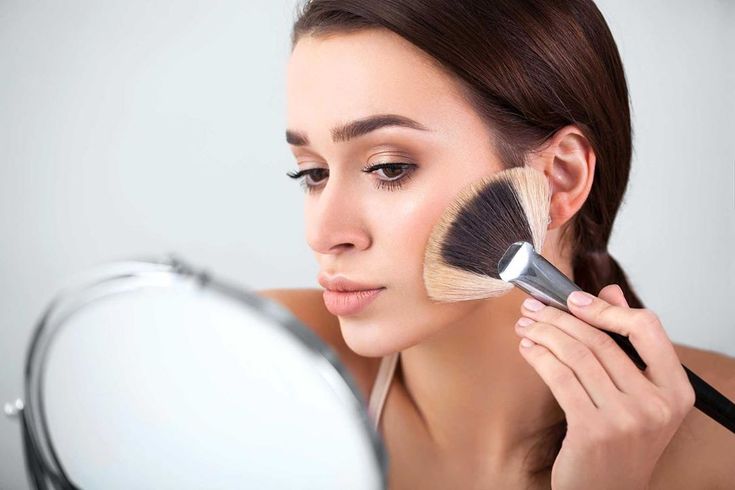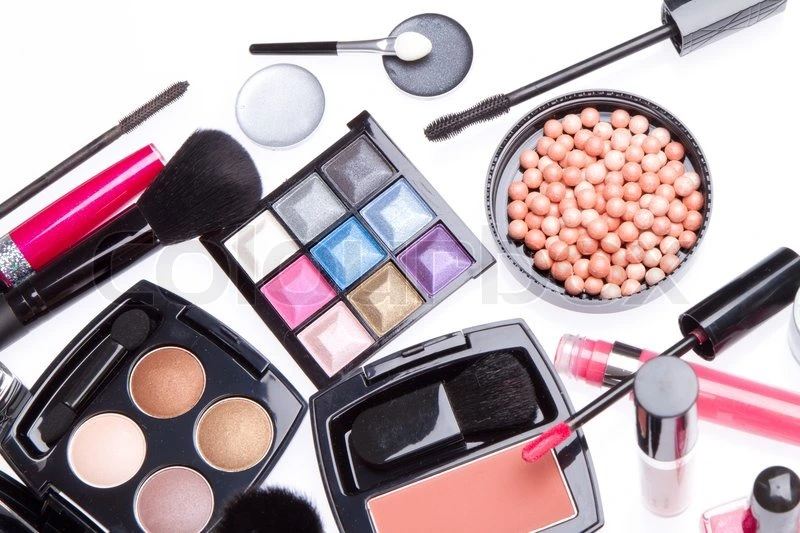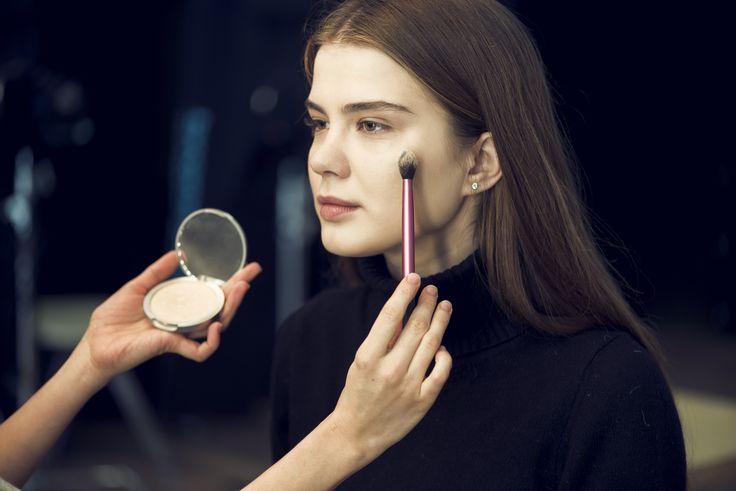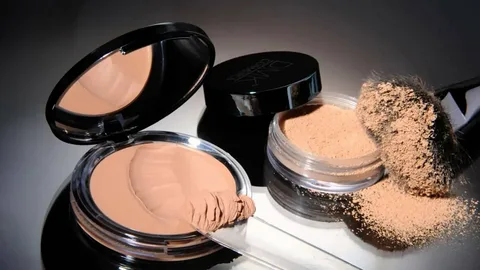Let’s be honest: the makeup addiction is real! Makeup encourages one to be creative, it boosts confidence and the end results are always beautiful.
But here is the twist that eye shadow you have been using for ages is more than just colors. It’s time to demystify sanitize powder makeup and there will be no two ways about it it is more crucial than you think.
Introduction: The Importance of Clean Makeup
Imagine this: It is a Saturday and you are getting ready to go out with some friends while applying some of your favorite blush. Unbeknownst to you, however, you are also slathering on a layer of germ infested blush on your skin.
Yikes! That is why, there should be no doubts that sanitize powder makeup is something that every woman should seriously consider especially if she cares about her skin and wants her products to last.
Did you know? The average makeup bag contains more bacteria than a toilet seat. Let that sink in for a moment.
Understanding Powder Makeup: More Than Meets the Eye
Before we dive into the nitty gritty of sanitization, let’s break down what we’re dealing with. Powder makeup isn’t just one thing it’s a whole family of products:
- Eye shadows
- Blushes
- Bronzers
- Setting powders
- Highlighters
All of these products in question consist of a dry powder which is a mixture of many different ingredients. These are:
Bentonite or Talc
Mica
Iron oxides
Titanium Dioxide
These adhesives help to provide a perfect matrix for pigments but could also pose dangers, especially if the products are not well taken care of;
Cosmetics, especially sanitize powder makeup, to ask for… why? The Dirty Truth.
You may be wondering to yourself, “It’s powder. What’s the worst that can happen?” Wait. Sit tight as we take you on a ride down with the Hush Hush on cosmetic damages.
Bacterial Growth: The Unwanted Squatter.
Bacteria thrive in hot and moist places and that is right such spaces can be provided by your makeup brush, your brush powder and even the powder itself.
Every time you open your makeup, there are several bacteria which will be borrowed from your skin, the brushes, or the air.
Skin Problems Just a Bad Day’s Makeup
Makeup that has become contaminated from infection is guilty of numerous crimes against the skin:
Pimples
Burning of the Skin
Infection of Eyes
Blood poisoning diseases like Staphylococci, acute occurrence
Product Longevity: Products That Help Something Become Permanent
Follow up cleaning does more than keep your skin healthy it also helps keep your products in good condition for longer, Regular cleaning above all helps to protect your cosmetics and beauty tools on the whole.
Decrease in the Treatment Costs Maintaining a Healthy Skin through the Use of ‘Purified’ Material’ Make up Nowadays extending the shelf life of perishable and nonperishable cosmetics encourages almost all willingness to travel to extreme lengths.
Prior To Sanitizing The Equipment Steps: Prepare As An Expert Would Do
Before you start sanitize powder makeup, you need to set the stage for success.
Assess Your Makeup
Take a good, hard look at your powder products. Ask yourself:
- How old is it?
- Does it smell off?
- Has the texture changed?
- Is there visible mold?
It’s possible that it is time to part ways with that product if any of these questions have received a positive response. Keep in mind that even the most thorough sanitization procedures cannot revive old cosmetics.
Assemble your kit
Here is the list of items you will require:
Isopropyl alcohol (70% – 91%)
Spray container
Clean rags or paper towels
Plastic cleaning knife or spatula
UV sanitizing equipment (if necessary)
A professional tip: No matter the materials or cosmetics, it is advisable that clean tools be used at all times to prevent any contamination.
Women’s cosmetics Make Up Sterilization as one of the Weapon of Cleanliness
Now, this is a more serious tone. So here’s the definitive guide to the most reliable methods of sanitize powder makeup finished.
Methods of Sterilization Powder make Up: The Alcohol Spray Method The Gold Standard
This is the technique preferred by almost every other makeup artist and beauty addict.
Methodology:
Take a comfortable bottle of 70-91% of isopropyl alcohol, and fill it out with a liquid.
Evenly and slightly spray over the surface of powder make up.
Do not apply immediately; allow it to dry out completely before hand.
Advantages:
Fast and simple
Bactericidal properties are excellent
Most powder varieties can withstand this process
Disadvantages:
Some powders might change their texture slightly
Not applicable for all make up categories
UV Light Sterilization: High Tech Hygiene
Here’s the procedure:
Ultraviolet C radiation disrupts the bodily structure of microorganisms and toxins that cause disease, making them ineffective.
Use a UV sanitize powder for your cosmetics, for a duration specified, usually 5-10 mins.
Effectiveness: UV light can be effective but in a pressed powder the surface may be too thick for it to fully penetrate. It’s best to use this method with others.
Scraping Rosa: Making a Clean Cut
Every now and then you have to get your hands dirty.
When to use:
- For powders that have developed a hard surface layer
- When dealing with visible contamination
Tools needed:
- Clean plastic scraper or spatula
- Alcohol wipes
Technique:
Slightly remove the uppermost coat of the powder. Sanitize powder the surface using an alcohol swab. Allow it to air dry completely before proceeding to the application.
Heating: Advance With Caution Heat can eliminate microorganisms; however, it is a complex technique with regards to cosmetics. Here’s how it goes: Some beauty enthusiasts use hair dryers or ovens to heat their makeup.
The heat is supposed to kill bacteria.
Precautions:
- This method can alter the texture and effectiveness of your makeup.
- There’s a risk of melting or damaging your products.
Expert opinion: Most makeup artists advise against heat treatment due to the risks involved.
Best Practices for Ongoing Makeup Hygiene: Prevention is Key
Sanitize powder makeup isn’t a one and done deal. Here’s how to keep your cosmetics clean in the long run:
Regular Cleaning Schedule
- Sanitize powder products monthly.
- Clean your makeup brushes weekly.
- Wipe down makeup containers and lids with alcohol wipes regularly.
Proper Storage Techniques
- Keep makeup in a cool, dry place.
- Close lids tightly after each use.
- Store brushes in clean, covered containers.
Safe Handling
- Always use clean hands or tools to apply makeup.
- Don’t share makeup with others.
- Avoid applying makeup in dusty or dirty environments.
DIY Sanitizing Solutions: Homemade Hygiene
Want to whip up your own sanitizing spray? Here’s a simple recipe:
Homemade Alcohol Spray:
- 2 parts 70-91% isopropyl alcohol
- 1 part distilled water
Add a couple of drops of tea tree oil (optional, for enhanced antimicrobial effect).
Combine the ingredients in a new spray bottle and spray them as you would commercial sanitizing sprays.
Natural Remedies: Those who would rather go natural can use
Witch hazel
Vinegar (white, watered down for use)
Grapefruit seed extract
Caution: These methods might not be as powerful as disinfectant wipes, however, they can reduce the level of bacteria growth.
Commercial Sanitizing Services: When to call the experts This is when you have to use heavy artillery.
Sometimes, you need to bring in the big guns.
Professional makeup sanitization services use industrial grade equipment to deep clean your cosmetics.
When to consider:
- After recovering from an eye or skin infection
- For large collections of high end makeup
- If you’re a makeup artist maintaining a professional kit
What to expect:
- UV sterilization
- Alcohol based cleaning
- Replacement of contaminated products
Sanitizing Makeup Tools: The Other Half of the Equation
Clean makeup is only half the battle. Your brushes, sponges, and applicators need love too!
Quick brush cleaning guide:
- Rinse bristles under lukewarm water.
- Gently massage with mild soap or brush cleaner.
- Rinse thoroughly.
- Squeeze out excess water.
- Reshape and lay flat to dry.
Remember: Clean tools = clean makeup. It’s a symbiotic relationship!
Special Considerations: Handling Delicate and Vintage Makeup
Not all makeup is created equal. Here’s how to handle special cases:
High End and Luxury Powders
- Check the manufacturer’s recommendations.
- Use gentler methods like light alcohol misting.
- Consider professional cleaning for very expensive items.
Vintage or Collectible Makeup
- Prioritize preservation over sanitization.
- Use UV sterilization if possible.
- Consult a professional conservator for valuable pieces.
Correcting for Human Error: Redefining the Boundaries of Cleaning
With the most altruistic approach, one can still make a blunder. Below is a list of certain things that can go wrong.
Too Much Disinfectant: Beyond a reasonable doubt, so much alcohol will cause your powders to clump together.
Use of unsuitable products: Do not use strong abrasives or bleach.
Breach of validity period: Nothing can be done by cleaning, once make up has ‘expired’.
Gaining Insight: The Makeup Artist’s Case
Although a professional makeup artist and with everything proper in kit hygiene, her makeup kit had a hygiene issue. After one of the clients suffered from an eye infection, Sarah understood that she will have to change all her methods of sanitize makeup and controlling infections.
Her solution:
- Implemented a strict weekly cleaning schedule
- Invested in a UV sanitizer for her kit
- Switched to single use applicators for lip and eye products
The result: Sarah’s new routine not only prevented further issues but also impressed her clients, leading to more bookings and positive reviews.
Quotes from the Experts
‘Disinfecting one’s make up is not purely clinical – it exhibits an appreciation of one’s skin and the art of make up.’ Lisa Eldridge, a Celebrity Make up artist.
‘Hygienic tools and hygienic cosmetics make any tailor made look much easier to achieve. Hygiene is paramount so never sacrifice it.’ Pat McGrath, a Legendary Make up artist.
FAQs
Q:Can I use my make up powder after sanitizing it without changing its color and pigmentation? A: Correct measure of sanitization usually does not change the color, however, too much alcohol based sanitization can change some products.
Q:Is it safe to use alcohol on all types of makeup? A: Most powdered makeup products should not be an issue with alcohol however, patch test always and follow instruction of the manufacturer.
Q:How can I tell if my powder makeup has gone bad? A: The soundness of a product can be gauged by odor, feel, or sight. More often than not, it’s better to dispose it than to keep it in the makeup kit.
Q:Can I sanitize cream products the same way with powders? A:There are also differences in applying sanitizers with cream products. Alcohol sprays are not the choice for all cream formulations.
Q:Traveling how do you sanitize the cosmetics? A: You Could Bring a Small Alcohol Spray and UV Sanitizer for Cleaning Purposes Alternatively Make Sure That All Applicators Are Clean.
Conclusion
Sanitizing your powder makeup is not just an aesthetic practice but a very important component of your skin care.
Adhering to these points allows not only improving the durability of the most favorite goods, but also excludes carpet irritation and inflammation by pathogenic microorganisms.
Bear in mind, a clean makeup box is a treasure.
So go forth, sanitize those powders, and enjoy your beautiful, bacteria free looks!



